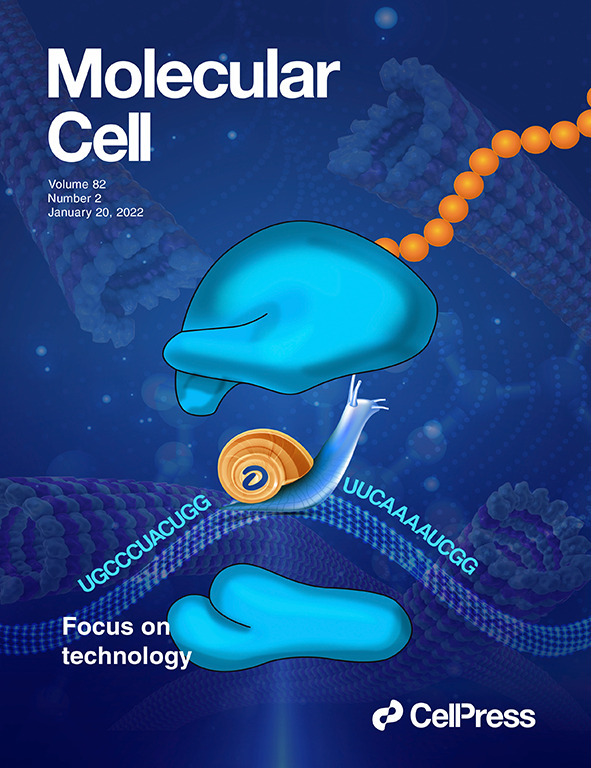解码SPP1调控:其在疾病进展中的作用的遗传和非遗传见解
IF 6.5
3区 生物学
Q2 BIOCHEMISTRY & MOLECULAR BIOLOGY
引用次数: 0
摘要
分泌磷蛋白1 (SPP1),又称骨桥蛋白,是一种多功能糖蛋白,在细胞粘附、趋化、免疫调节和组织重塑等多种生理过程中发挥关键作用。SPP1最初被认为是骨基质的关键成分,现在被认为广泛参与许多组织,并对正常生理和疾病进展产生重大影响。SPP1的失调与多种疾病的发病和进展密切相关,包括癌症、心血管疾病、自身免疫性疾病和慢性炎症。SPP1的表达受到遗传和非遗传机制的严格调控。遗传改变,如SPP1基因内的单核苷酸多态性、插入和缺失以及结构变异,与各种疾病的易感性增加有关,影响疾病的严重程度和结果。此外,非遗传调控,包括DNA甲基化、组蛋白修饰和长链非编码rna,在调节SPP1表达以响应环境和细胞信号方面发挥关键作用。这篇综述提供了控制SPP1的遗传和非遗传调控机制的全面概述,并研究了它们在疾病发病机制中的意义。通过整合最近的研究结果,本综述强调了遗传易感性和非遗传调控在决定SPP1活性方面的复杂相互作用,并对其作为潜在生物标志物和治疗靶点的作用提供了新的见解。了解这些调控途径对于开发针对SPP1起关键作用的疾病的靶向干预措施至关重要。本文章由计算机程序翻译,如有差异,请以英文原文为准。
Decoding SPP1 regulation: Genetic and nongenetic insights into its role in disease progression
Secreted phosphoprotein 1 (SPP1), also known as osteopontin, is a multifunctional glycoprotein that plays a critical role in various physiological processes, including cell adhesion, chemotaxis, immune regulation, and tissue remodeling. Originally identified as a key component of the bone matrix, SPP1 is now recognized for its broad involvement in numerous tissues and significant impact on both normal physiology and disease progression. Dysregulation of SPP1 has been strongly implicated in the pathogenesis and progression of several diseases, including cancer, cardiovascular diseases, autoimmune disorders, and chronic inflammatory conditions. The expression of SPP1 is tightly regulated by genetic and nongenetic mechanisms. Genetic alterations, such as single-nucleotide polymorphisms, insertions and deletions, and structural variations within the SPP1 gene, have been associated with increased susceptibility to various diseases, influencing disease severity and outcomes. Additionally, nongenetic regulations, including DNA methylation, histone modifications, and long noncoding RNAs, play crucial roles in modulating SPP1 expression in response to environmental and cellular signals. This review provides a comprehensive overview of the genetic and nongenetic regulatory mechanisms governing SPP1 and examines their implications in disease pathogenesis. By integrating recent findings, this review highlights the complex interplay between genetic predispositions and nongenetic regulations in determining SPP1 activity and offers new insights into its role as a potential biomarker and therapeutic target. Understanding these regulatory pathways is essential for the development of targeted interventions for diseases in which SPP1 plays a pivotal role.
求助全文
通过发布文献求助,成功后即可免费获取论文全文。
去求助
来源期刊

Molecules and Cells
生物-生化与分子生物学
CiteScore
6.60
自引率
10.50%
发文量
83
审稿时长
2.3 months
期刊介绍:
Molecules and Cells is an international on-line open-access journal devoted to the advancement and dissemination of fundamental knowledge in molecular and cellular biology. It was launched in 1990 and ISO abbreviation is "Mol. Cells". Reports on a broad range of topics of general interest to molecular and cell biologists are published. It is published on the last day of each month by the Korean Society for Molecular and Cellular Biology.
 求助内容:
求助内容: 应助结果提醒方式:
应助结果提醒方式:


